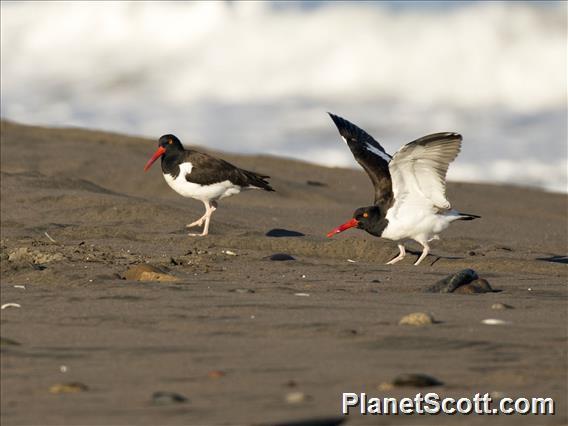American Oystercatcher (Haematopus palliatus)

American Oystercatcher (Haematopus palliatus)

American Oystercatcher (Haematopus palliatus)


×



American Oystercatcher (Haematopus palliatus)

American Oystercatcher (Haematopus palliatus)
About American Oystercatcher (Haematopus palliatus)
- Kingdom: Animals
- Phylum: Chordates
- Class: Birds
- Order: Pelicans
- Family: Oystercatchers
The American oystercatcher, occasionally called the American pied oystercatcher, is a member of family Haematopodidae. Originally called the "sea pie", it was renamed in 1731 when naturalist Mark Catesby claimed that he had observed the bird eating oysters. The current population of American oystercatchers is estimated to be 43,000. There are estimated to be 1,500 breeding pairs along the Atlantic and Gulf Coasts of the US. The bird is marked by its black and white body and a long, thick orange beak.
Source: Wikipedia
Lifelists
Visits
-
2005-02-14
Puerto Deseado, Argentina -
2006-12-03
Isla Fernandina - Punta Espinosa, Ecuador -
2006-12-04
Isla Santiago - James Bay, Ecuador -
2007-06-17
Stone Harbor Point, United States of America -
2008-01-07
Playa de Los Reyes, Mexico -
2009-03-05
Isla Coiba, Panama -
2009-03-19
Punta Patino, Panama -
2010-06-21
Cape May Point State Park, United States of America -
2013-04-16
Aransas NWR (CTC 037) (Aransas Co.), United States of America -
-
-
-
-
-
-
-
-
-
-
-
-
-




